Traffic Barricades
Barricades provide a clear and concise way to block off areas where access is not permitted. Having appropriate barricades that are easy to see and quick to discern means facilitating proper information and action on your job site. We’re pleased to offer barricades in the following varieties for your convenience:
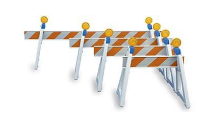
- A Frame #200
- I Beam w/ High Intensity or Engineer Grade
- Click here for more information
Type I and Type II Barricades
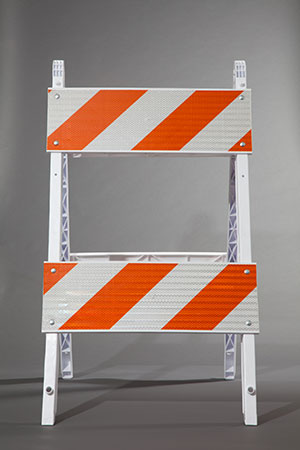
- Wood or plastic
- High Intensity or Engineer Grade
- Sales or rentals
- 8″ x 24″, 8″ x 36″, or 8″ x 48″
- NCHRP 350 compliant
Type III Breakaway Barricades
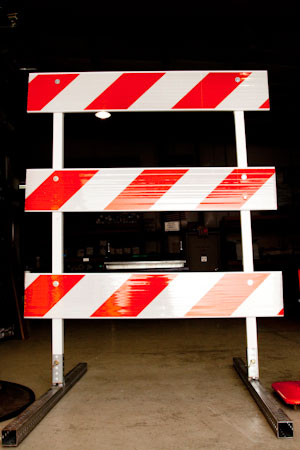
- Frame made w/galvanized square tubing
- Resistant to rust and corrosion
- Collapses 40% faster
- High Intensity or Engineer Grade
- 8″ x 48″ or 8″ x 96″
- NCHRP 350 compliant
- Click here for more information
Barricade Tape
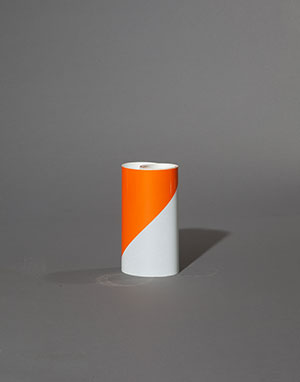
- 4″ or 6″ stripe
- Left or right slant
- High Intensity or Engineer Grade
- 7-3/4″, 8″, 11-3/4″, or 12″ x 50 yd. rolls
Plasticade™ or Narrowcade Options
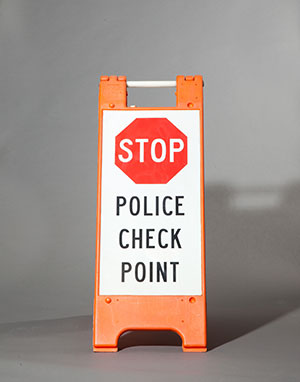
- 24″ x 45″ plasticade
- 13″ x 45″ or 13″ x 36″ narrowcade
- High Intensity or Engineer Grade
Type III Break-Away Barricades (24” x 48”)
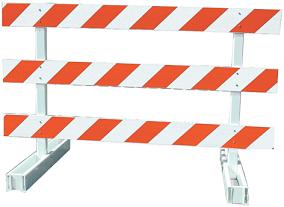
- Galvanized or plastic
- Sheeting one side or two 8″ x 48″
- High Intensity or Engineer Grade
- 360 degree flashing light w/dome lens
- Light mounting support bracket
- Flags fluorescent red/orange 24″ x 24″ w/wood dowel
Road & Traffic Barricades
There’s no mistaking the intent of a barricade, and everyone who drives up on one is instantly aware that the area up ahead is off-limits to drivers, and that no access is permitted. Barricades quickly convey to motorists that it is not allowable to proceed through the area being blocked off and that some other route must be adopted. Barricades are an essential traffic control component. They’re used to prevent collisions and other accidents in development zones. Such accidents can impact not only the area being developed, but work crews involved in construction, and the driver of the vehicle as well. For this reason, barriers are designed to help lessen the risk to pedestrians, motorists, work crews, and to property.
They improve visibility for the area, and they assist with directing traffic, as well as providing a higher level of safety for the entire work area, and ensuring that workers can do their jobs safely and effectively. Here are some of the areas where barriers are frequently used to help guide traffic and keep everyone involved safe from harm:
- Construction zones and road work areas
- Parking lots at schools and educational facilities
- Parking garages and other commercial locations
- Hotels and resorts
- Gas stations and automobile repair facilities
- Department stores and shopping malls.
Barricade Stripes
The orange diagonal stripes on the barricade or vertical panel guide you toward the direction to which you are to pass. Stripes sloping downward to the right indicate you must bear to the right and stripes sloping downward to the left indicate bear to the left. Facing the barricade above, you must pass to the left.
Types of Barricades
There is a whole slew of different barricades that can be used in various traffic situations, primarily because there are different needs associated with preventing access to specific areas. Here are some of the most commonly used barriers, along with their distinctive features:
A-frame Barricades
These are often used for construction, traffic security, and crowd control, and can be purchased in sets or as parts. They often have reflective sheeting on either side of the boards, and the legs can be ballasted with sandbags to anchor them in place.
Type I and Type II Folding Barricades
These kinds of barriers are generally constructed with durable plastic legs, and have large panels so that maximum stability and visibility can be achieved. They are generally lightweight and easy to handle and are frequently made from impact-resistant polyethylene. There is a huge variety of Type I and Type II folding barricades available, and since they generally have a modular design, it’s very easy to replace individual components in these barriers.
Type III Barricades
The square tubing used on Type III barricades allows for them to be stronger and tougher, and they are generally used for longer duration tasks. Type III Barricades are generally road barriers that can easily fold down for breakdown or setup.
Crosswalk Barricades
These are most often used around traffic projects or in areas of high pedestrian activity. They instruct pedestrians which way to go, and they alert drivers to the presence of pedestrians in the area. Panels and plates for these types of barriers usually can be easily separated and stacked, so that storage is a breeze. Panels are generally weather-resistant and made of poly-carbonate plastic for long-lasting usage.
Cone Bars
These are often used in tandem with traffic safety cones, for the purpose of creating a physical barrier to direct pedestrians, and to establish greater control of foot traffic. They will generally have reflective bands for greater visibility, and since they are made of durable PVC, they can extend to various lengths to satisfy your requirements.
Jersey Barriers
These are some of the sturdiest barricades on the market, weighing in at a solid 100 pounds. They are used to safeguard construction sites right at street side, or to blockade roads while they’re being resurfaced.
Plastic Channelizer Drums
These are reflective drums that are intended to convey a change of direction when lanes up ahead are closed. They can also be utilized for crosswalk areas on streets or lanes winding through a construction zone. They are very helpful for guiding traffic for pedestrians and motorists because they have high visibility and great durability. The drum and its foundation will stay snapped together until you need to separate them for removal and eventual storage.
Importance of Using Barricades
As a driver, you should never attempt to bypass a barricade you see placed anywhere in the roadway. First of all, it’s illegal, and you could be subject to being ticketed, with an accompanying financial penalty. But even if you can’t see any danger in the roadway behind a barricade, you should not attempt to pass it, because you don’t know why the barricade was placed there.
It could be that there’s a break in the road or a hole which workers have to fill, but whatever the reason, it warrants placing the barricade there. Apart from all that, it will help to keep you safer, as well as any workers who are active in the area, and it will contribute to safe driving for everyone else on the road with you.
Questions about the products and services we offer at Worksafe Traffic Control Industries? Call us at (603) 224-0880 or contact us online.

